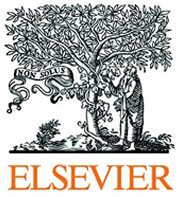Volumes 104–105, July–August 2013, Pages 32–41
Jorge Capdevila: P450 metabolites of arachidonic acid ? from biochemistry to therapy
Fat to treat fat: Emerging relationship between dietary PUFA, endocannabinoids, and obesity
- Lipid Chemistry and Molecular Biology Laboratory, Center on Aging, University of Connecticut, Storrs, CT, USA
 Obesity incidence continues to escalate as a global nutrition and health problem. Scientists and clinicians are engaged in numerous research approaches that include behavior, education, applied nutrition studies and clinical therapies to prevent, control and reverse obesity. The common goal is to identify areas of basic and clinical research to understand aspects of human biology that contribute to obesity. In these approaches recent discoveries in biology and advancing technologies are tools employed to prevent and reverse obesity. The purpose of this review article is to present the current knowledge of key components of the endocannabinoid system that contribute to eating, influence systemic energy metabolism, and dietary factors that alter the responses of ligand binding and activation of cannabinoid receptors. Herein the objectives are to (1) describe the relationship between dietary polyunsaturated fatty acids (PUFA) and obesity, (2) explain the role of this signaling system in obesity, and (3) present areas of consequential future research with dietary long chain PUFA. There are several gaps in the knowledge of the role dietary PUFA play in the tone of the endocannabinoid signaling system involving ligands and receptors. Elucidating the PUFA relationship to signaling tone may explain the presumed overstimulation of signaling believed to contribute to over eating, fat accretion and inflammation. Future research in this endeavor must be hypothesis driven utilizing appropriate models for investigations on dietary PUFA, endocannabinoids and obesity.
Obesity incidence continues to escalate as a global nutrition and health problem. Scientists and clinicians are engaged in numerous research approaches that include behavior, education, applied nutrition studies and clinical therapies to prevent, control and reverse obesity. The common goal is to identify areas of basic and clinical research to understand aspects of human biology that contribute to obesity. In these approaches recent discoveries in biology and advancing technologies are tools employed to prevent and reverse obesity. The purpose of this review article is to present the current knowledge of key components of the endocannabinoid system that contribute to eating, influence systemic energy metabolism, and dietary factors that alter the responses of ligand binding and activation of cannabinoid receptors. Herein the objectives are to (1) describe the relationship between dietary polyunsaturated fatty acids (PUFA) and obesity, (2) explain the role of this signaling system in obesity, and (3) present areas of consequential future research with dietary long chain PUFA. There are several gaps in the knowledge of the role dietary PUFA play in the tone of the endocannabinoid signaling system involving ligands and receptors. Elucidating the PUFA relationship to signaling tone may explain the presumed overstimulation of signaling believed to contribute to over eating, fat accretion and inflammation. Future research in this endeavor must be hypothesis driven utilizing appropriate models for investigations on dietary PUFA, endocannabinoids and obesity.
Highlights
Keywords
- Obesity;
- Endocannabinoids;
- PUFA;
- Omega-3 fatty acids;
- Adiponectin;
- Dietary fat;
- Human
Figures and tables from this article:
Copyright © 2013 Elsevier Inc. All rights reserved.







